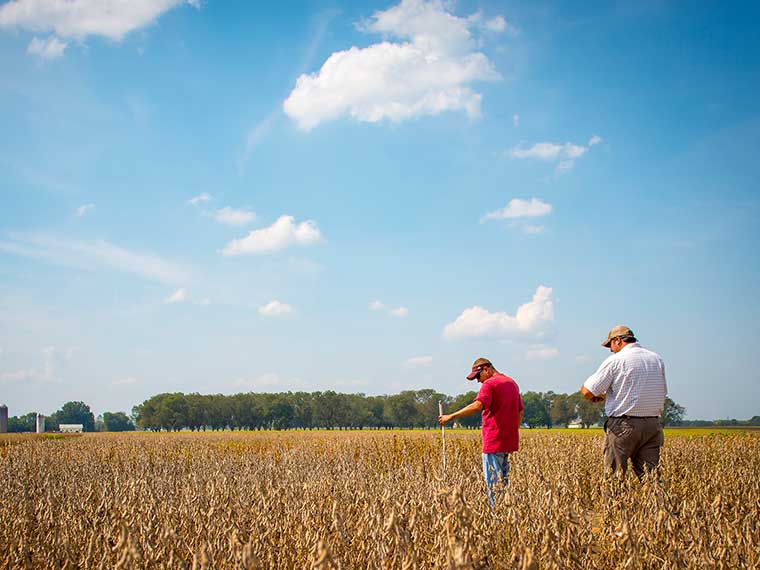Black Belt Experiment Station
By: Reagan Poston
The information presented on this page may be dated. It may refer to situations which have changed or people who are no longer affiliated with the university. It is archived as part of Mississippi State University's history.
Mississippi State's Black Belt Branch Experiment Station is a 655-acre research facility located just outside of Brooksville, Mississippi.
The Black Belt Branch Experiment Station was established in 1946 by the Mississippi legislature, one of sixteen experiment stations across the state, each in a location carefully chosen to represent the primary soil types and climates across the state.
Brooksville, just thirty minutes from the main campus in Starkville, is considered one of the on-campus units. Its soil-silty clay soil-is that of an area known as the Black Prairie, which includes a swath of land through Mississippi and Alabama known for its rich, fertile soil and open, sparsely forested fields. It is the soil that makes Brooksville special, as the soil is unique to the state of Mississippi, making the Black Belt Branch and the research conducted there invaluable to Mississippi's agricultural community.
Initial research was conducted with beef cattle, row crops, forage, and pasture crops. In the early years, research projects conducted at this experiment station included turkeys, broilers, milk production, ewes, and egg production.
Now, the Brooksville Experiment Station is mostly home to row-crop research that focuses on corn, cotton, soybeans, wheat, and native grasses. One current project focuses on improving germination of six warm-season native grasses used for erosion control, soil health, and wildlife habitat. By selectively breeding native grasses over a series of generations, researchers are trying to reduce seed dormancy to improve germination.
Another study tackles tough-to-control weeds that compete for resources in wheat. Plots were sprayed and assessed for weed control of winter annual broadleaf species including cutleaf evening primrose, roughseed buttercup, tansy mustard, flixweed, henbit, and field pennycress. Fifteen treatments of different herbicides combined and alone were applied. Results indicated that treatments containing the herbicide Finesse resulted in the highest broadleaf weed control, with all treatments resulting in weed control above 85 percent.
The MAFES Official Variety Trials are also grown at the station, providing farmers with yield data as well as maturity date, plant height, lodging, reaction to disease and herbicides, and plant characteristics, depending on the crop. The MAFES Official Variety Trials are professionally managed and conducted by a team of experts in a research-oriented environment to minimize variability. These trials provide unbiased, comprehensive information that assists farmers in making pivotal decisions about variety/hybrid selection and management.
The station plans to install furrow, lateral, and center pivot irrigation systems complete with a newly-constructed pond for on-farm water storage. The system will utilize the hilly landscape to capture rainwater. This will open another opportunity for researchers to study on-farm irrigation at the station.
Its closeness to campus and unique soil type make the Black Belt Branch Experiment Station an invaluable resource for scientists and students to research issues important to farmers throughout the region.
For more information about the Black Belt Branch Experiment Station, contact John Blanton at john.blanton@msstate.edu.

